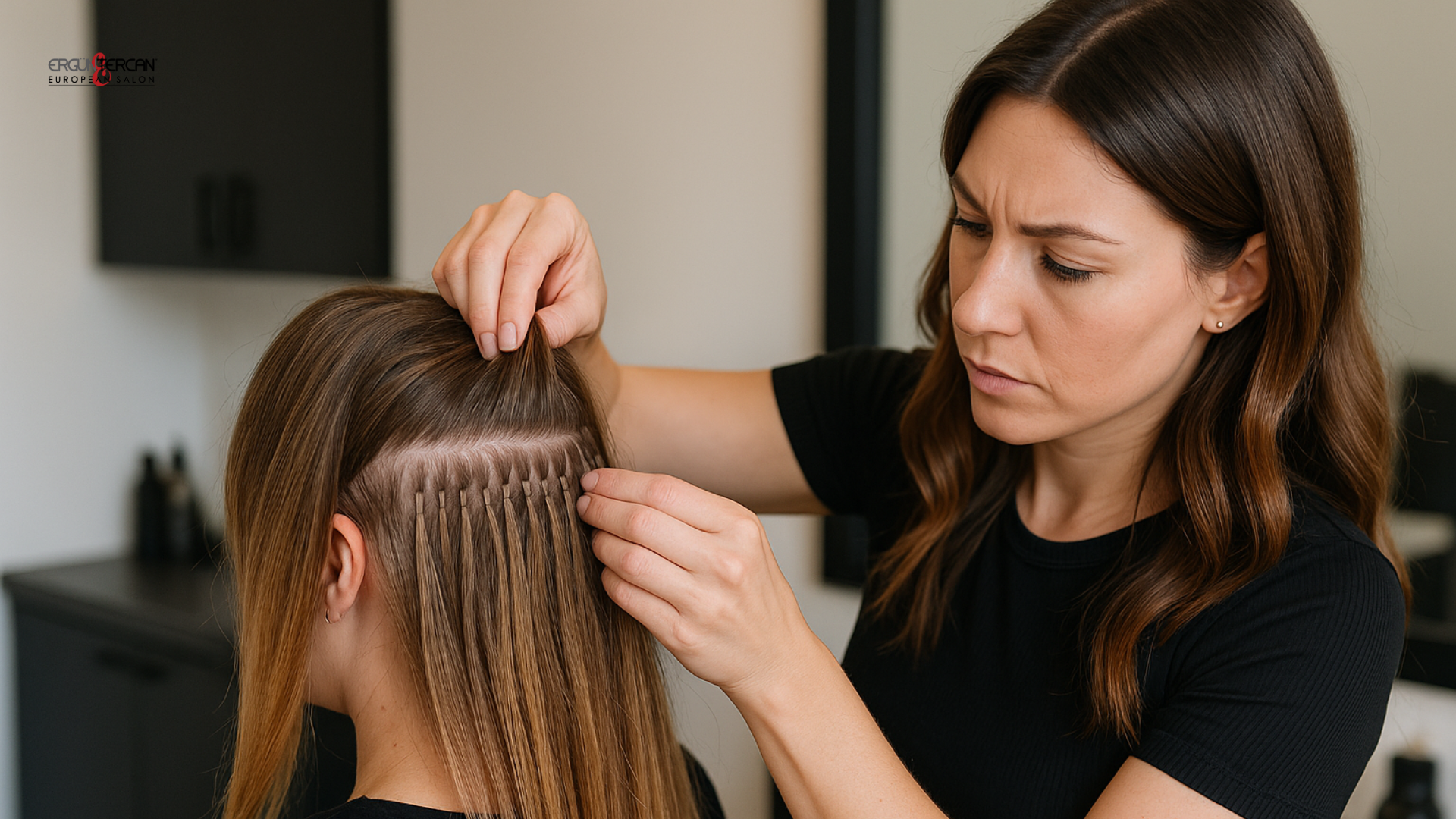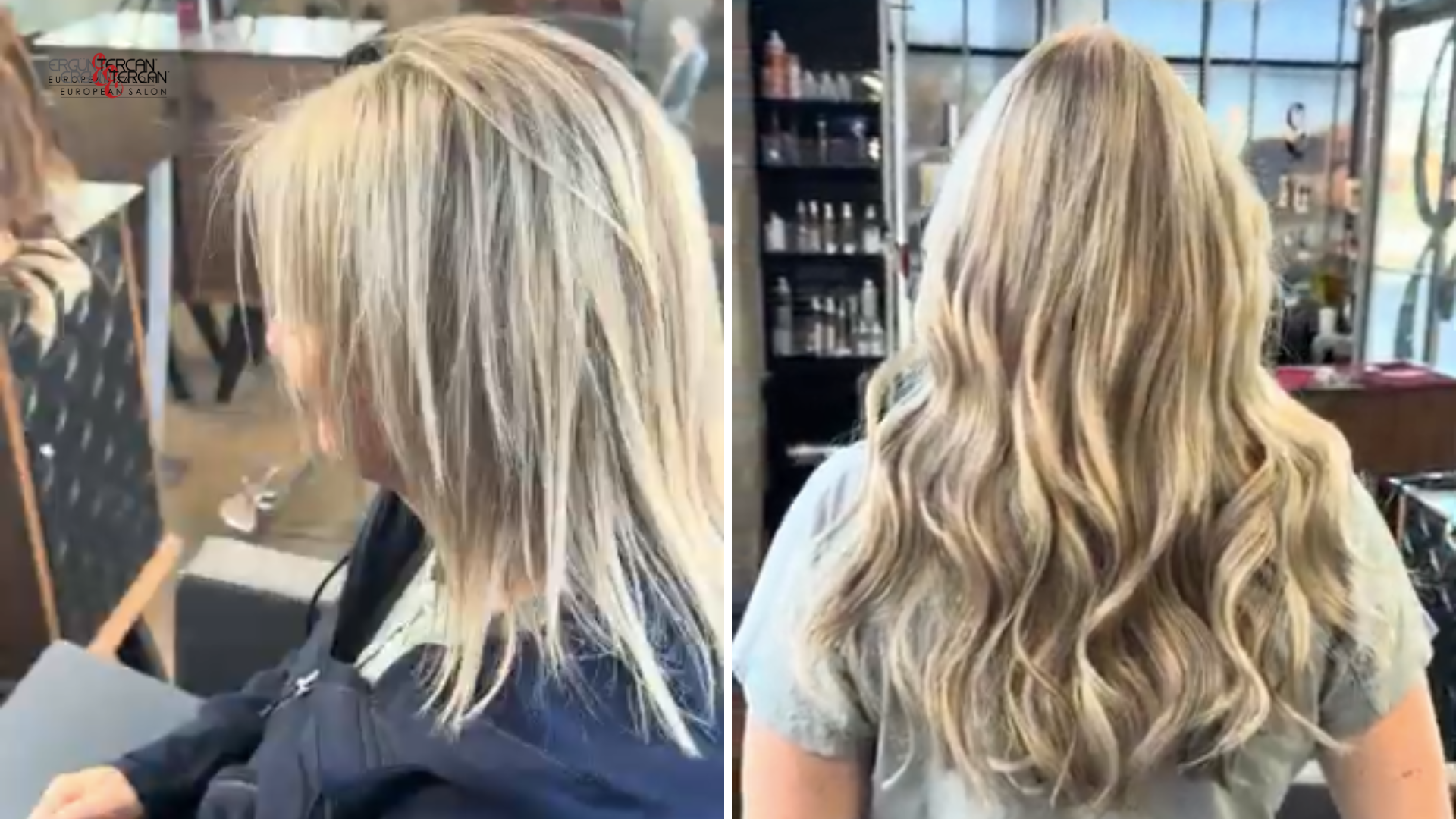Signs It’s Time to Move Up or Replace Your Extensions
How to Know When Your Hair Extensions Need a Move-Up or Replacement
Hair extensions are designed to give you confidence, length, and fullness—but just like natural hair, they need regular maintenance to stay healthy and beautiful. Even with perfect care, every set eventually needs to be moved up or replaced. Knowing the signs early prevents damage, protects your natural hair, and keeps your extensions looking seamless.
As one of Denver’s leading extension salons, we’re breaking down the exact signs to watch for so you’ll always know when it's time to book your next appointment.
1. Your Extensions Are Growing Down or Starting to Slip
As your natural hair grows—usually about half an inch per month—the bonds, wefts, or tapes naturally shift downward. When this happens, your extensions no longer sit where they’re supposed to, which can lead to pulling, heaviness, tangling, and visible attachment points. You might also notice your styling routine becomes harder, and your hair doesn’t fall the same way it used to.
Overgrown extensions put pressure on your natural hair and can cause unnecessary tension. Keratin bonds usually need a move-up every 10–12 weeks, hand-tied wefts every 6–8 weeks, and tape-ins around every 6 weeks. If your extensions feel loose, swingy, or lower than usual, it’s time to book a move-up before they start causing damage.
2. You’re Seeing More Shedding or Breakage Than Normal
A small amount of shedding is normal, but excessive fall-out from the bond, thinning ends, or broken pieces throughout the set means your extensions are wearing out. This often happens after months of heat styling, brushing aggressively, skipping maintenance appointments, or sleeping with loose hair.
When shedding becomes noticeable, the extensions lose their fullness and start to look uneven. You may notice pieces falling out during brushing or washing, or the ends beginning to look stringy. Once shedding reaches this stage, the hair is already weakened and can no longer provide the thick, seamless look you want—making replacement the safest option.
3. Tangling and Matting at the Roots Are Becoming a Problem
Matting is one of the strongest signs that your extensions have gone too long without maintenance. When the bonds or wefts grow too far down, hair naturally tangles at the root area where your natural hair and the extension hair meet. This creates knots that are difficult to brush and may require professional detangling.
If you start noticing clumps of hair sticking together, tangling that returns immediately after brushing, or rough texture near the attachment point, it’s time to schedule a move-up immediately. Leaving matting untreated can cause breakage and thinning of your natural hair.
4. Your Extensions No Longer Blend Seamlessly With Your Natural Hair
One of the first cosmetic signs of aging extensions is poor blending. As your real hair grows and changes shape, the extensions may start to look uneven, bulky, or completely separate from the rest of your hair. The ends may look thinner, drier, or more frayed, and the color may no longer match perfectly due to fading or sun exposure.
Sometimes a trim or tone refresh can help, but if the extensions themselves have become too worn, dry, or damaged, a new set is the only way to bring back that polished, natural-looking blend.
5. Your Extensions Feel Permanently Dry, Dull, or Frizzy
Even high-quality extensions can become dry or frizzy when exposed to excessive heat, hard water, harsh products, or dry climates—especially here in Denver. You may notice your extensions don’t feel as soft as before, the shine has faded, or the ends look rough even after styling.
Leave-in conditioners and deep-moisture products can help temporarily, but if the frizz or dryness returns immediately or never fully improves, the extensions are likely overdue for replacement. Extremely fried ends or dull, lifeless texture usually indicate the cuticle has been worn down beyond repair.
6. Product Buildup Makes Your Extensions Feel Heavy or Stiff
Over time, hairspray, dry shampoo, serums, and other styling products accumulate on your extensions—especially at the top of wefts or bonds. If the hair starts to feel sticky, stiff, or coated, it may be due to product buildup that regular washing can’t remove.
A clarifying treatment can help, but heavily coated extensions often signal deeper damage. If your extensions won’t soften or move like they used to, even after multiple washes, they may need to be replaced.
7. Your Extensions Feel Thin, Flimsy, or Less Stable
Extensions naturally thin out over time, especially with daily brushing, heat styling, and normal wear. You might notice the hair feels lighter, the ends look uneven, or the overall density no longer matches the fullness you had when the extensions were new.
If brushing causes more hair fall than usual or your extensions lay flat and lifeless, they’re likely at the end of their lifespan. Flimsy, weakened extensions won’t hold style, won’t blend well, and can put extra strain on your natural hair—making replacement the best option.
8. Your Scalp Feels Sore or the Extensions Feel Heavy
If your extensions begin to feel heavy, uncomfortable, or create tenderness around the roots, they’re likely growing too far down. When attachments slide or sit too low, they pull against your natural hair, especially during sleeping, brushing, or styling. This discomfort is your scalp’s way of telling you it’s time for a move-up.
9. You’ve Reached the End of the Extension’s Natural Lifespan
Every extension method has a recommended wear timeline:
Keratin Bonds: typically 3–5 months
Hand-Tied Wefts: 6–12 months with excellent care
Tape-Ins: 2–3 reapplications before replacing
Clip-Ins: up to 1 year
Weft Systems: roughly 6–9 months of quality use
Even with the best products and habits, extensions eventually reach their limit. If you’ve had your current set longer than the recommended lifespan, replacing them will improve your hair’s appearance and prevent possible damage.
How to Make Your Extensions Last Longer (Pro Tips from Denver Experts)
To keep your extensions healthy between appointments, brushing twice daily with an extension-safe brush is essential. Always detangle from the bottom up to avoid pulling at the roots. Sleeping in a loose braid while using a silk or satin pillowcase also reduces friction and prevents tangling overnight. When washing, choose sulfate-free products formulated for extensions and apply oils or serums only to the mid-lengths and ends—never near the bonds or tapes. Keep your hot tools under 320°F and always use heat protection. And lastly, commit to your maintenance schedule—routine move-ups are the key to extending the life of your extensions.
Move-Up vs. Replace: How to Tell What You Actually Need
A move-up is usually needed when your extensions have grown down, feel slightly loose, or are beginning to tangle at the roots—but the hair itself still feels healthy and soft. If your extensions still look thick, shiny, and smooth once styled, a move-up is typically all you need.
A replacement is necessary when the extensions themselves show wear—such as splitting, shedding, dryness, matting, or loss of density. When the texture or quality of the hair can’t be revived with shampoo, hydrating treatments, or trimming, it’s a clear sign the extensions have reached the end of their life.
Related Reads
Loved this read? Keep exploring expert hair extension care and styling tips from our team — check out these related blogs below!



